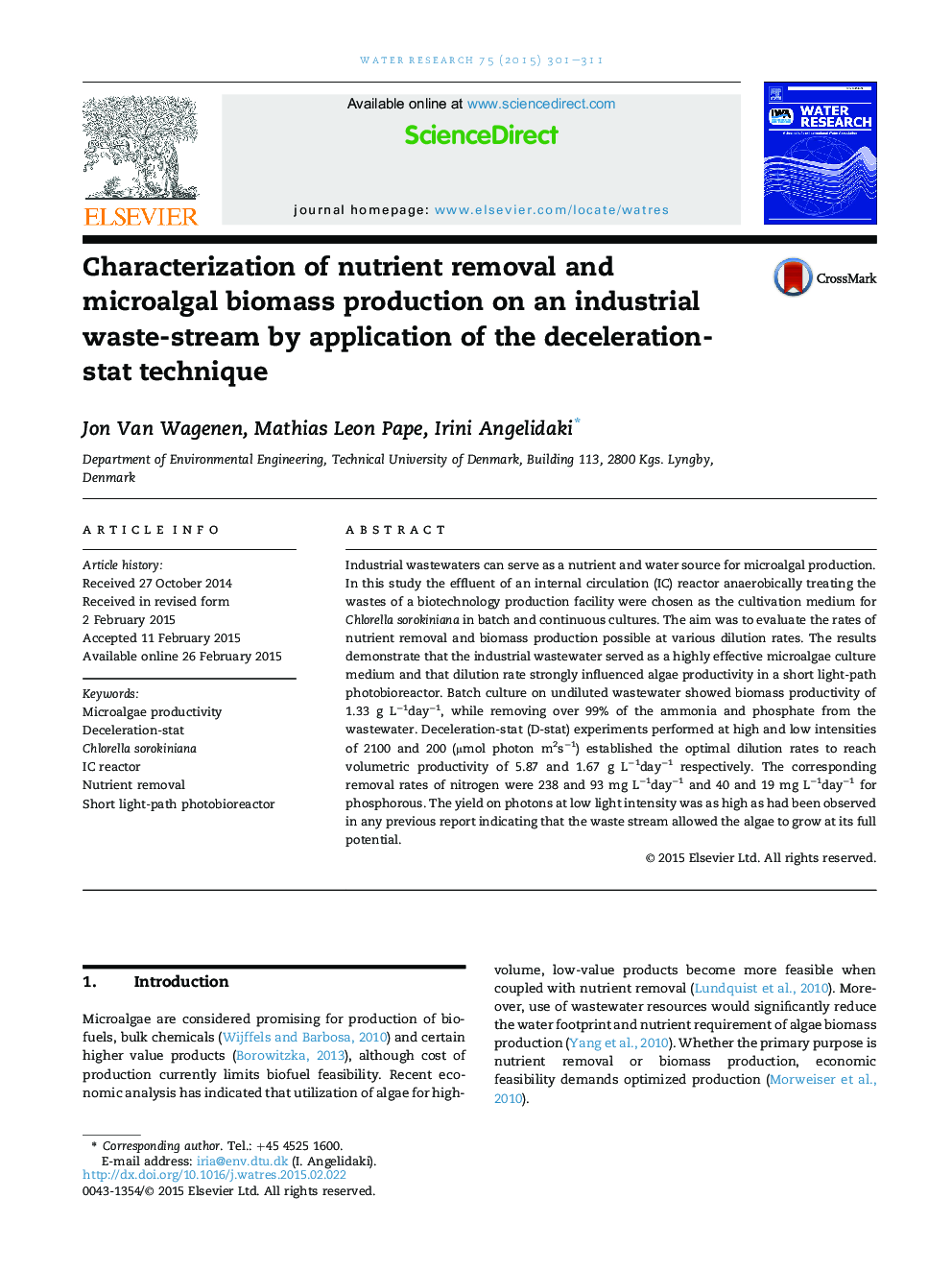| کد مقاله | کد نشریه | سال انتشار | مقاله انگلیسی | نسخه تمام متن |
|---|---|---|---|---|
| 4481217 | 1623093 | 2015 | 11 صفحه PDF | دانلود رایگان |
• Effluent of an IC reactor supports stable, dense microalgae cultures in photobioreactors.
• Max. removal of N, P and COD was >99% > 99% and 75% at rates of upto 300, 55 and 1100 mg−1 L−1 D−1.
• Achieved biomass productivity over 5 g−1 L−1 D−1 with maximum yield on photons upto 1.32 gmol−1.
• Concentrated wastewaters are more efficiently treated with high-surface area photobioreactor.
• This is the first reported application of the D-stat technique to study algal waste treatment.
Industrial wastewaters can serve as a nutrient and water source for microalgal production. In this study the effluent of an internal circulation (IC) reactor anaerobically treating the wastes of a biotechnology production facility were chosen as the cultivation medium for Chlorella sorokiniana in batch and continuous cultures. The aim was to evaluate the rates of nutrient removal and biomass production possible at various dilution rates. The results demonstrate that the industrial wastewater served as a highly effective microalgae culture medium and that dilution rate strongly influenced algae productivity in a short light-path photobioreactor. Batch culture on undiluted wastewater showed biomass productivity of 1.33 g L−1day−1, while removing over 99% of the ammonia and phosphate from the wastewater. Deceleration-stat (D-stat) experiments performed at high and low intensities of 2100 and 200 (μmol photon m2s−1) established the optimal dilution rates to reach volumetric productivity of 5.87 and 1.67 g L−1day−1 respectively. The corresponding removal rates of nitrogen were 238 and 93 mg L−1day−1 and 40 and 19 mg L−1day−1 for phosphorous. The yield on photons at low light intensity was as high as had been observed in any previous report indicating that the waste stream allowed the algae to grow at its full potential.
Figure optionsDownload high-quality image (287 K)Download as PowerPoint slide
Journal: Water Research - Volume 75, 15 May 2015, Pages 301–311
